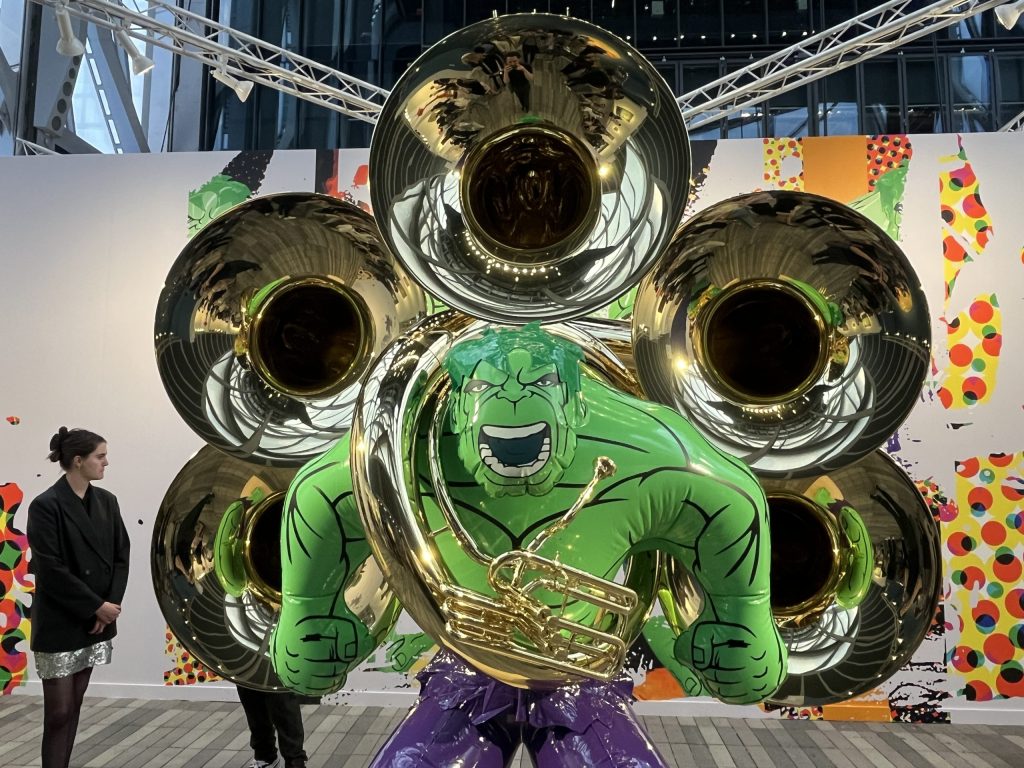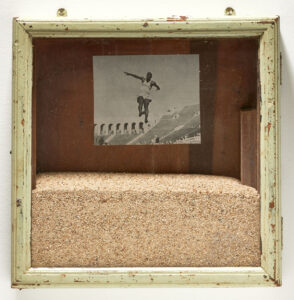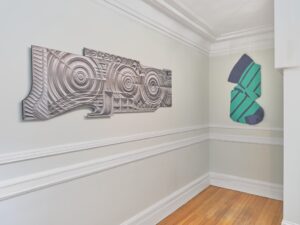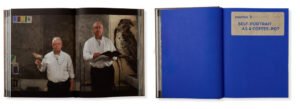Frieze New York Is Back to Its Old Ways


“Oh, I looove her!” I hear a woman in a striped suit gush about Belgian artist Ann Veronica Janssens, whose large glass piece “Pinky Sunset R” (2021) is currently on view at Esther Schipper gallery’s booth at Frieze New York.
“Ugh,” she grunts with elation. “This!” she points back at the piece as she walks past it, “this is the stuff!”
But the woman and her interlocutor zoom off, not stopping to get a better look at the $90,000 glass artwork, let alone purchase it.
A moment later, two men in identical white dress shirts pause in front of the piece. “So lovely,” one of them comments. “I think this color is called ‘sunset pink,’” the other speculates. “That’s true!” the former confirms giddily as he reads the wall label.
They give the piece another quick glance and walk away without making any inquiries.

Leaning against a wall in the cold fluorescent light of The Shed in Manhattan’s ultra-posh Hudson Yards, the ribbed glass artwork indeed shimmered with the pink, red, yellow, and orange hues of a pacifying sunset. It’s got its own energy field, refracting light in unexpected ways by some mysterious natural algorithm that comes from melding and layering different types of glass. But core to its appeal at this commercial art extravaganza is its sheer harmlessness. The work is not charged with any political or social messages. It’s not fighting for or against anyone. It’s free of identity politics. It’s as inoffensive as a summer breeze, and the best part: It is what you want it to be.
Janssens’s glass slab is a fitting metaphor for this year’s Frieze New York, which was recently acquired by Hollywood billionaire Ari Emanuel as part of a $200 million package. This year, the upscale trade fair is true to itself, finally abandoning the facade of being socially forward while selling art as a luxury item in the tens of millions. Ethnic cleansing, starvation of populations, disemboweled children, raging inflation, persecuted migrants, vilified press, and depleted reproductive and LGBTQ rights — you’ll find no mention of that here. Goodbye wokeness. So long, DEI.

I see the hazy reflection of two moving figures in Janssens’s radiant glass. It’s a young, trendy woman and her companion, both in jeans. “My mom would totally love this one,” says the woman. She snaps a quick photo of the artwork, another of the label, and walks away. Like the others, she doesn’t buy it.
Could this be anecdotal proof of an art market in crisis? From experience, dealers will usually tell the press that sales are swell, no matter the real figures. But this year is different. Many remained tight-lipped when I asked them about the impact of President Donald Trump’s tariffs and other erratic economic policies on their businesses. Lower-ranking gallery attendants told me they were directed not to speak to journalists, instead referring me to hired PR agents.


One Berlin gallerist, who preferred to remain anonymous, finally discloses: “There’s been a bit of a slowdown, but we’re still optimistic.”
Ned Wood, an art collector based in Upstate New York, responds with a rhetorical question while examining a sculpture: “Does art really follow the economy to the extent that people might buy less?” He adds, “I don’t know anything about it. I buy what I like.” He then confesses that he hasn’t bought anything yet.
A few steps later, I hear someone say, “You have to see the Jeff Koons!”
Just when you think Koons has hit rock bottom with his trashy, cash-grabbing pop art, he reminds you he can sink even lower. At Gagosian’s booth, he installed three quasi-inflatable bronzes of The Incredible Hulk, a Marvel character, fused with a functioning organ and brass tubas. “Jeff invited musicians to play on the instruments this morning,” an excited gallery attendant tells me. These hideous sculptures are part of Koons’s Hulk Elvis series, dating back to 2004. Though no person above the age of 10 should find any merit in them, “Hulk (Tubas)” (2004–18) sold for $3 million.

Just like the Hulk, the blue-chip art market inflates with anger and slams its fist on the floor if you keep pestering it with the nuisance of the outside world. The multimillion-dollar Koons sale is like a fuck-you message to the world: If we could come out of the 2008 financial meltdown relatively unscathed, then we can also handle a president’s mercurial policies.
But it’s not superstars like Koons who have to worry about an impending recession. It’s much smaller players like New York-based fiber artist Orly Cogan, who says she feels “less inspired to make art” under today’s political and economic conditions. There’s plenty of fabric art at the fair this year, but Cogan is not among the exhibiting artists.
“The economic crisis will mainly affect mid-size artists,” art collector and producer Valentine Uhovski tells me. “Blue-chip collectors are going to focus on familiar, safe artists.” His fair companion, fellow collector Olga Rei, delivers a somber warning while basking in the glow of Janssens’s glass piece: “I think people are going to feel the economic crisis a lot more at the end of the year.”
When asked what she thinks of the artwork, she replies in a downcast voice, “It’s magical because it reflects your mood.”







